Explore Bulawayo - Zimbabwe Travel, Africa
Strategically located in the southwestern part of the country, Bulawayo, or the “City of Kings,” serves as a gateway to some of Zimbabwe's most treasured sites, including the Matobo National Park and Khami Ruins, both are UNESCO World Heritage Sites. Known for its rich history and cultural significance, Bulawayo invites travelers to explore its storied past and vibrant present. With its easy accessibility and an array of attractions, Bulawayo is a must-visit for those wanting to immerse themselves in Zimbabwean culture.
Population: Approximately 660,000 in 2022.
Economy: Bulawayo's economy is diverse, with key sectors including manufacturing, trade, and agriculture. The city is known for its industrial base and vibrant small businesses, contributing to its economic growth.
Landmarks: Famous for the Matobo National Park, Khami Ruins, and Bulawayo Railway Museum.
Zimbabwe
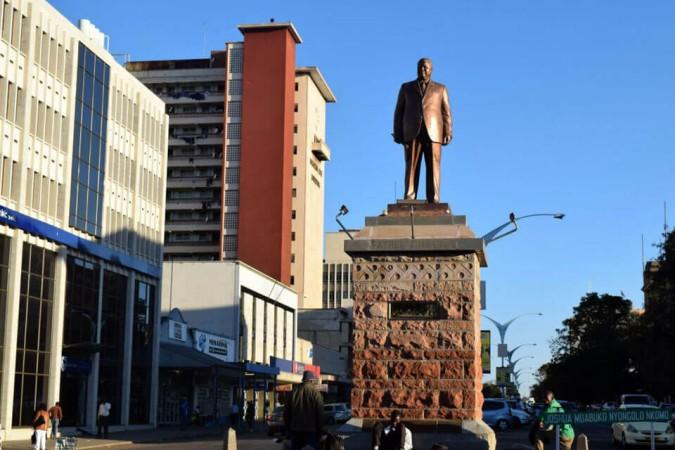
Overview of Bulawayo
History & Cultural Influence
Bulawayo boasts a fascinating history that dates back centuries, shaped by the Ndebele Kingdom, colonial influences, and Zimbabwe’s independence. Founded by King Lobengula in the 19th century, Bulawayo was once the capital of the Ndebele people, and its heritage remains an integral part of the city’s identity. Visitors can see this history come to life through the preserved colonial-era architecture and the industrial heritage of the city. Culturally, Bulawayo’s cultural identity is further celebrated in its lively art scene, with galleries showcasing works from local artisans and craftsmen. The city's streets are filled with sculptures, paintings, and murals that reflect its creative spirit and cultural pride.
Interaction with The Locals
Bulawayo is Zimbabwe's second-largest city, with the majority of the population belonging to the Ndebele ethnic group, though the city is also home to a mix of other ethnicities and cultures. Citizens of Bulawayo are known for their warm hospitality, strong community ties, and rich cultural heritage. English, Ndebele, and Shona are commonly spoken languages, reflecting the city's diversity. The people of Bulawayo are proud of their history and traditions, with a strong emphasis on arts, crafts, and community festivals.
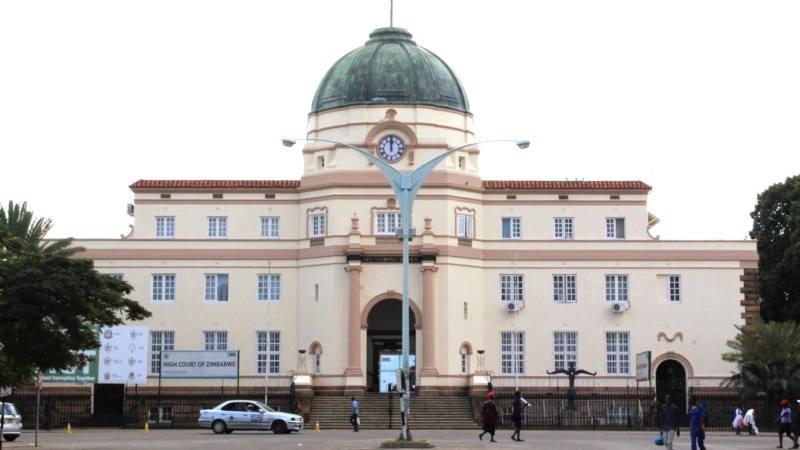
Bulawayo Town Hall - © Bulawayo Publicity Association
Top Attractions in Bulawayo
Bulawayo is home to some of Zimbabwe’s most captivating attractions, combining natural beauty, ancient history, and cultural landmarks. With a variety of must-visit sites, Bulawayo is a destination that promises adventure and discovery at every turn.
- Matobo National Park: Known for its stunning granite hills and balancing rocks, Matobo is a UNESCO World Heritage Site. It also has important rock art made by the San people over thousands of years. Visitors can enjoy hiking, wildlife viewing, and guided tours to see historical sites such as Cecil Rhodes’ grave.
- Khami Ruins: Just outside Bulawayo, this ancient city was once the capital of the Kingdom of Butua and is now a UNESCO World Heritage Site. Explore the stone walls, terraces, and towers that date back to the 15th century, offering a glimpse into Zimbabwe’s ancient civilizations.
- Bulawayo Railway Museum: A must for history enthusiasts, this museum showcases the city’s colonial past through an impressive collection of steam engines and railway memorabilia. Learn about Bulawayo's important position in southern Africa's transportation network.
- National Art Gallery: Located in the heart of Bulawayo, the gallery features contemporary Zimbabwean art, including works from both established and emerging artists. This is a great spot to appreciate local talent and purchase unique pieces.
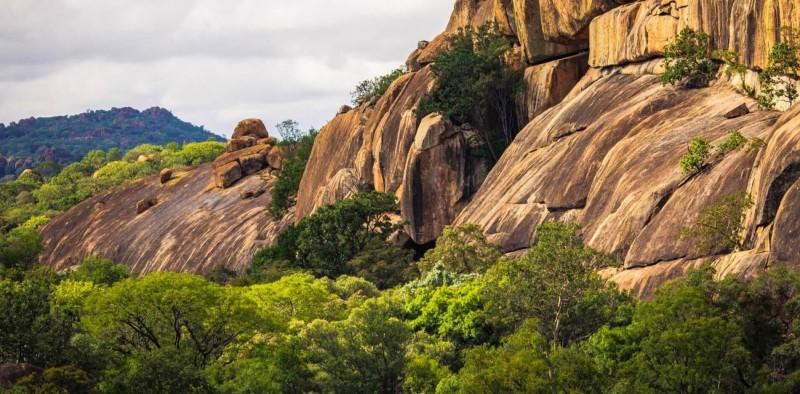
Matobo National Park - © Mzala Tom
Must-Try Dishes in Bulawayo
From hearty meat dishes to adventurous local snacks, Bulawayo's culinary tradition offers a delicious exploration of Zimbabwean traditions. Whether you're trying Sadza with game meat or sampling some Nyama, there's something for every palate.
- Sadza: A quintessential Zimbabwean staple, sadza is a thick porridge made from maize meal. It’s served with a variety of accompaniments such as beef stew, muriwo (leafy vegetables), or nyama. In Bulawayo, you can experience variations like Sadza Madora (served with mopane worms) or Sadza Mazondo (cow heels).
- Nyama (Grilled Meat): Known for its flavorful meat dishes, Bulawayo is home to a variety of grilled or stewed meats, commonly referred to as nyama. The local braai (barbecue) culture is strong, where you can savor grilled beef, goat meat, or chicken seasoned with Zimbabwean spices. Street vendors and markets are great places to find fresh, smoky nyama.
- Ulusu: Also known as tripe, this dish features the stomach lining of cows or goats, slow-cooked and often served with sadza. It is a popular traditional dish in Bulawayo, loved for its rich flavor and unique texture.
- Umxhanxa: A sweet and simple traditional dessert, Umxhanxa is made from boiled pumpkin and maize, sweetened to taste. This wholesome treat is a favorite among locals, especially during the harvest season.
- Bota: A breakfast porridge made from sorghum or maize meal, bota is often served with a side of peanut butter or honey for added flavor. It’s a warm, comforting start to the day, widely enjoyed across Zimbabwe, including Bulawayo.
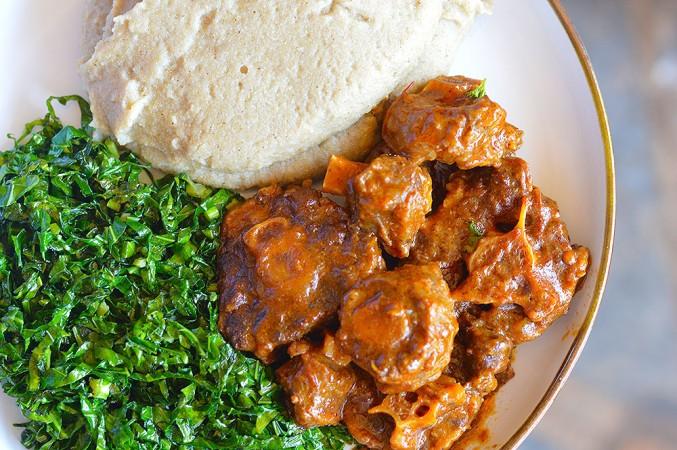
Sadza - © ZimboKitchen
Festivals & Local Celebrations
Bulawayo’s festivals and local celebrations offer an incredible window into the city’s vibrant culture, arts, and traditions. These celebrations offer travelers a chance to immerse themselves in local customs and creative expressions, making any visit to Bulawayo a truly enriching journey.
Intwasa Arts Festival
Held annually in September, the Intwasa Arts Festival is one of Zimbabwe’s largest and most important cultural events. This multi-disciplinary arts festival showcases the talents of local and international artists in various forms, including theater, dance, music, poetry, and visual arts. It offers visitors an opportunity to experience the creative heartbeat of Bulawayo, with performances and workshops held at different venues across the city. The festival promotes artistic expression and cultural exchange, while celebrating Bulawayo’s role as a cultural hub in Zimbabwe.
Umthwentwe (Traditional Ndebele Ceremony)
Umthwentwe is an annual celebration that honors the Ndebele culture and heritage. This ceremony typically involves traditional dances, songs, and rituals that are passed down through generations. Locals dress in vibrant traditional attire, and visitors are welcome to participate in the festivities. The event not only preserves the cultural identity of the Ndebele people but also fosters a sense of community and unity. It’s a fantastic opportunity for tourists to witness authentic Ndebele customs, as well as to engage with the local population in a meaningful way.
Makokoba Heritage Festival
Celebrating one of Bulawayo’s oldest neighborhoods, the Makokoba Heritage Festival is a community-driven event that highlights the cultural heritage and history of Makokoba Township. The festival includes street parades, storytelling, music, and art displays that reflect the neighborhood’s vibrant spirit. Visitors can experience local traditions up close and interact with the community through workshops and exhibitions. It’s a celebration of Bulawayo’s roots and the resilience of its people.
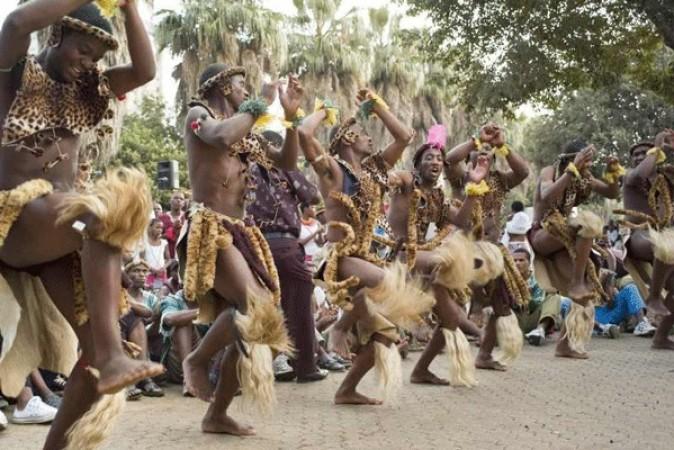
Umthwentwe (Traditional Ndebele Ceremony) - © AVAC Arts
What to Do in Bulawayo
- Wildlife Safari Tours: Take a day trip to Matobo National Park for game drives, where you can spot white rhinos, giraffes, leopards, and over 300 bird species. It’s an ideal destination for nature enthusiasts, offering walking safaris and scenic hikes among the park’s famous granite hills.
- Visit Cultural Village: Gain a deeper understanding of Zimbabwean rural life by visiting traditional Ndebele villages near Bulawayo. These tours allow you to learn about the customs, daily routines, and rich heritage of the local people.
- Historical Tours: Explore Khami Ruins and learn about Zimbabwe’s pre-colonial history with guided tours that explain the significance of this UNESCO World Heritage Site. The impressive stone structures and breathtaking views make it a highlight of any Bulawayo itinerary.
- Art and Museum Tours: Take a leisurely tour of Bulawayo’s National Art Gallery and Natural History Museum, where you can dive deep into the city’s cultural and scientific heritage. Both locations offer curated exhibits that showcase the best of Zimbabwean art and natural history.
Shopping in Bulawayo
Shopping in Bulawayo is not only an opportunity to take home unique Zimbabwean items, but it’s also a way to engage with the local culture and support the vibrant artisan community.
- Bulawayo City Market: For an authentic shopping experience, visit the bustling Bulawayo City Market, where you can buy traditional Zimbabwean crafts like pottery, woven baskets, beadwork, and fabrics. This market is a great place to find locally made items while supporting artisans and small businesses.
- Elephant’s Walk Village: This artisan hub features shops selling fine crafts, art, and jewelry made by Zimbabwean artists. Whether you're after unique sculptures or hand-painted textiles, Elephant’s Walk is a must-stop for quality souvenirs.
- Mhlahlandlela Shopping Centre: For those looking for a more modern shopping experience, Mhlahlandlela Centre offers a mix of local boutiques and retail shops. You can find fashion, electronics, and a range of other goods while exploring the city's urban shopping district.
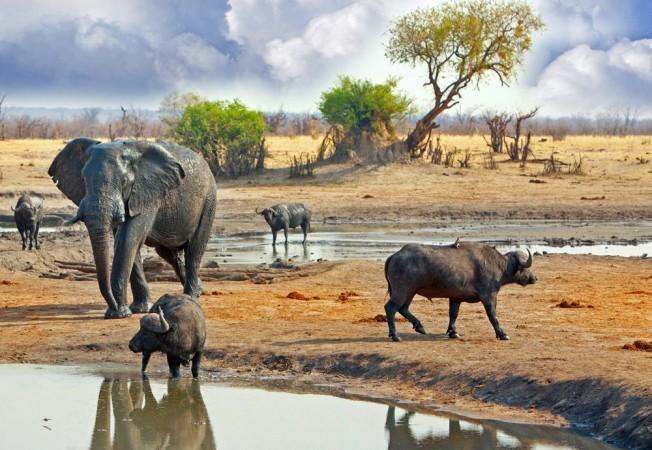
Wildlife Safari Tours in Matobo National Park - © Masai Mara Migration Safaris
Weather in Bulawayo: Best Time to Visit
Bulawayo has a subtropical highland climate marked by warm, dry winters and pleasant, rainy summers. Understanding Bulawayo’s weather helps ensure a pleasant and well-planned visit, allowing you to enjoy everything the city has to offer in comfort.
Wet Season in Bulawayo
Summers in Bulawayo are generally warm and wet. Temperatures range from 20°C to 30°C (68°F to 86°F), with occasional heavy rains that provide relief from the heat. This is an excellent time to see the lush landscapes and colorful foliage caused by the rainfall. However, be prepared for brief thunderstorms and occasional humidity.
Dry Season in Bulawayo
Winters are mild and dry, with temperatures ranging from 10°C to 25°C (50°F to 77°F). Nights can be quite cool, so packing warm layers is advisable. The dry season offers clear skies and pleasant weather, ideal for outdoor activities and sightseeing. This is the peak tourist season due to the comfortable temperatures and low humidity.
Best Time to Visit
The best time to visit Bulawayo is during the dry season months (April to October) when the weather is cooler and more comfortable for exploring outdoor attractions. The wet season months offer a different experience with lush landscapes but come with higher humidity and occasional rains.
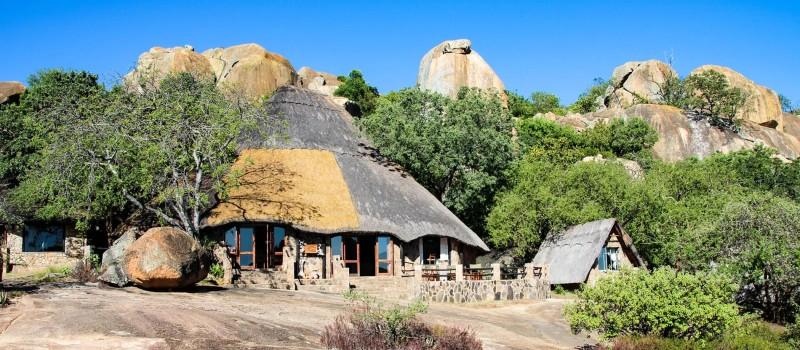
Enjoy eco-lodging in Matobo National Park - © Facts.net
Essential Travel Information
Getting Around Bulawayo
- Taxis and Ride-Sharing: Taxis are widely available throughout the city. It’s advisable to use reputable taxi services or ride-sharing apps like Uber for safety and convenience.
- Public Buses: Bulawayo has a network of public buses that connect different parts of the city and surrounding areas. Although economical, buses can be crowded and may not always adhere to strict schedules.
- Private Car Rentals: Renting a car offers flexibility and convenience, particularly for exploring attractions outside the city. Several rental agencies operate in Bulawayo, providing a range of vehicles for self-drive exploration.
- Bicycle Rentals: For a more leisurely way to explore the city, consider renting a bicycle. It’s a great way to see Bulawayo at a relaxed pace and navigate through the city’s parks and local neighborhoods.
- Walking: Many of Bulawayo’s key attractions are within walking distance of each other, especially in the city center. Walking is a wonderful way to explore your surroundings and engage with the local people.
ATM & Banking Services
With reliable banking and ATM services in Zimbabwe, you can easily handle your financial needs while exploring Bulawayo. ATMs are commonly found at major shopping centers, hotels, and public areas, accepting international cards for cash withdrawals. It’s advisable to inform your bank about your travel plans to ensure smooth transactions. Although the Zimbabwean Dollar is the native currency, US dollars are frequently accepted in many places. Currency exchange services are accessible in a variety of venues, including airports, banks, and exchange offices.
Where to Stay in Bulawayo
- Luxury Hotels: For a high-end experience, opt for luxury hotels that provide modern amenities such as comfortable rooms, fine dining, and exceptional service. These establishments offer a premium stay with a focus on comfort and elegance.
- Mid-Range Hotels: If you’re looking for a balance between comfort and cost, mid-range hotels offer essential amenities at a reasonable price. These hotels typically include services such as Wi-Fi, on-site dining, and convenient locations.
- Budget Lodgings: Budget travelers will find guesthouses and hostels that offer affordable rates while still providing essential comforts. These options are great for those seeking a cost-effective stay without sacrificing basic amenities.
- Unique Stays: For a distinctive experience, consider locally owned lodges or eco-friendly retreats. These options often offer a more immersive experience and the opportunity to engage with local communities.
Articles for you

Explore Yala National Park - Sri Lanka Travel, Asia
Tucked away in Sri Lanka’s southeastern corner, Yala National Park is where wild nature meets deep tradition. Known worldwide for its leopard population, the park is also home to elephants, sloth bears, crocodiles, and hundreds of bird species. Beyond wildlife, Yala opens doors to a cultural landscape dotted with ancient temples, Buddhist ruins, and coastal villages. For travelers seeking more than just a safari, Yala offers a chance to explore eco-tourism, local communities, and sacred heritage sites.
Population: The Yala National Park area doesn’t have a human population.
Economy: The economy around Yala National Park thrives on a blend of eco-tourism, agriculture, and local services. Safari tours, eco-lodges, and cultural experiences drive steady income for nearby towns like Tissamaharama and Kataragama, supporting thousands of families.
Landmarks: Famous for Block I of Yala and wildlife encounters, including elephants, sloth bears, crocodiles, and exotic bird species.

Explore Galle - Sri Lanka Travel, Asia
Nestled on Sri Lanka’s southern coastline, Galle is a vibrant city where history meets the sea. Its cobbled streets, colonial architecture, and serene beaches make it a must-visit destination for travelers seeking a blend of culture, adventure, and relaxation. A UNESCO World Heritage site, Galle captivates visitors with its Dutch Fort, bustling markets, and friendly locals. Whether you’re exploring the ramparts at sunset or savoring fresh seafood by the shore, Galle promises an unforgettable journey into Sri Lanka’s heritage.
Population: Approximately 113,000 in 2023.
Economy: Galle’s economy thrives on tourism, trade, and fisheries. The city’s historic fort, colonial architecture, and coastal charm draw thousands of international visitors each year, making tourism its main economic driver. Fishing remains vital for local livelihoods, supplying fresh seafood across the region.
Landmarks: Famous for the Galle Fort, Dutch Reformed Church & Maritime Museum, and Unawatuna Beach.

Explore Bentota - Sri Lanka Travel, Asia
Nestled along Sri Lanka’s southwestern coast, Bentota is a tropical paradise that blends golden beaches, vibrant culture, and thrilling adventures. Famous for its calm waters, luxury resorts, and scenic river estuary, Bentota has become a top destination for travelers seeking both relaxation and authentic experiences. From serene beach walks at sunrise to adrenaline-pumping water sports, this coastal town offers a perfect balance of leisure and exploration. With its proximity to Colombo and Galle, Bentota is easy to reach, making it an ideal stop for both short escapes and extended holidays.
Population: Approximately 37,000 in 2023.
Economy: Bentota’s economy thrives mainly on tourism, which drives local businesses such as hotels, restaurants, and wellness retreats. The town also benefits from fishing, coconut cultivation, and handicrafts like wood carving and batik textiles. Many residents rely on the growing demand for water sports and Ayurvedic treatments, making tourism the backbone of both income and employment in the area.
Landmarks: Famous for Bentota Beach, Bentota River Safari, and Kande Vihara Temple.

Explore Mirissa - Sri Lanka Travel, Asia
Mirissa is a charming coastal town on Sri Lanka’s southern shoreline. Known for its golden beaches, turquoise waters, and vibrant marine life, it has become a must-visit stop for travelers exploring the island. Many come for whale watching, surfing, and sunset views at Coconut Tree Hill, but Mirissa offers much more than postcard beauty. The fishing boats you see anchored by the bay carry generations of stories. Local traditions, delicious cuisine, and a laid-back rhythm of life shape every visitor’s experience.
Population: Approximately 4,700 in 2023.
Economy: Mirissa’s economy is largely shaped by its coastal location. Fishing has long been the backbone of local livelihoods, with generations relying on the Indian Ocean for income. In recent decades, tourism has become the main driver of growth, thanks to whale watching, surfing, and beachside hospitality.
Landmarks: Famous for Mirissa Beach, Coconut Tree Hill, and Parrot Rock Bridge.

Explore Nuwara Eliya - Sri Lanka Travel, Asia
Tucked away in the Central Highlands of Sri Lanka, Nuwara Eliya is often called “Little England”. With its rolling tea plantations, cool misty mornings, and colonial charm, this mountain town feels like a step into another world. Travelers come here to breathe fresh air, walk through flower gardens, sip the finest Ceylon Tea, and enjoy a pace of life far from the island’s busy cities. Whether you’re drawn by scenic landscapes, heritage architecture, or the warmth of its people, Nuwara Eliya is a destination that blends nature, culture, and history in perfect harmony.
Population: Approximately 781,000 in 2023.
Economy: Nuwara Eliya’s economy thrives mainly on tea production, as it sits in the heart of Sri Lanka’s central highlands, famous worldwide for Ceylon Tea. The city also benefits from a growing tourism industry, attracting visitors with its colonial charm, cool climate, and scenic landscapes.
Landmarks: Famous for Gregory Lake, Hakgala Botanical Garden, and Victoria Park.

Explore Sukau - Malaysia Travel, Asia
Nestled on the banks of the Kinabatangan River in Sabah, Malaysian Borneo, Sukau is a destination where wildlife, culture, and conservation come together. Known as one of Asia’s top spots for river safaris and eco-tourism, this quiet village offers a front-row seat to encounters with Bornean orangutans, pygmy elephants, proboscis monkeys, and exotic birdlife.
Population: Approximately 1,400 in 2019.
Economy: Sukau’s economy is shaped by its riverine location and natural resources. Traditionally, the Orang Sungai community relied on fishing, small-scale farming, and forest gathering for their livelihood. Today, the village has shifted toward eco-tourism, with river cruises, jungle trekking, and homestays providing income.
Landmarks: Famous for the Kinabatangan River cruises, Gomantong Caves, and Ox-bow lakes and wetlands.
